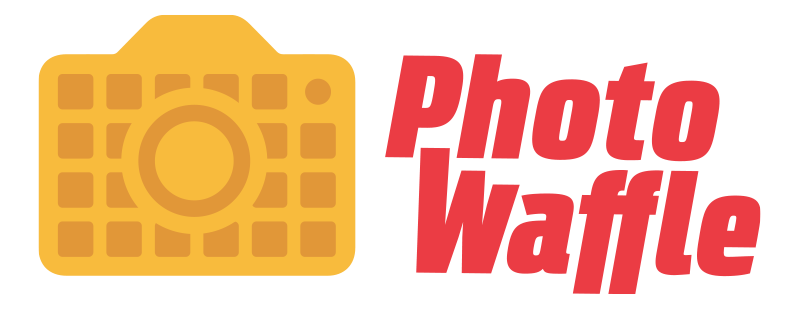Copyright, AI-Created Images, and the Future of Photography: Balancing Innovation and Protection
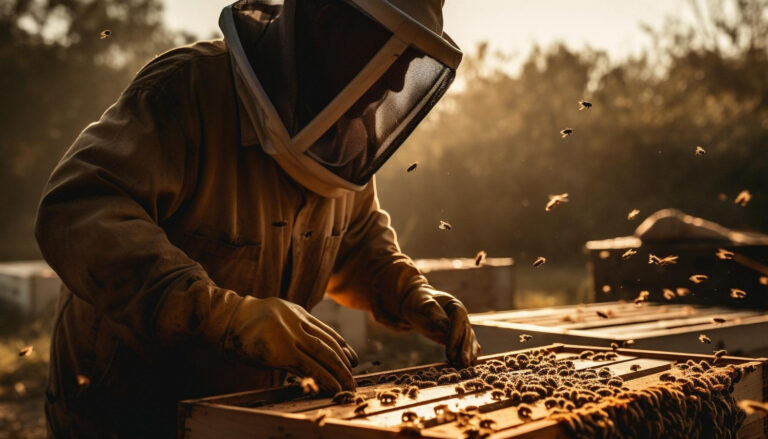
The history of creativity and technology has often been marked by profound shifts, and today, the fusion of artificial intelligence (AI) and photography stands at the forefront of transformative change. We take a look into the multifaceted landscape of copyright law in relation to AI-generated images, considering recent developments, global perspectives, ethical dilemmas, and practical case studies.
Historical Context: The Evolution of Copyright
A glimpse into the annals of copyright law reveals its dynamic nature, adapting over time to accommodate technological advancements. From the early days of traditional copyright, protecting the works of human creators, to the digital age, where the boundaries have blurred, copyright law has continually evolved. The challenge today lies in reconciling these historic principles with the emergence of AI as a creator in its own right.
AI in Photography: Redefining Creativity
In the modern landscape, AI’s presence in photography is undeniable. It empowers creators with tools for image enhancement, style transfer, and even AI-generated art. For instance, AI algorithms can recreate iconic art styles, allowing photographers to emulate the works of famous painters in their photographs. You need to look no further than Prisma Lab’s popular Lensa application, one of the first to offer these kinds of tools to the public. AI’s ability to mimic and augment human creativity has blurred the lines between human and AI-generated content, prompting a reevaluation of copyright’s reach.
Legal Precedents: The Washington D.C. Verdict and Beyond
Less than a month ago (from the time of writing), on August 21st, a Washington DC federal judge adjudicated that artificial intelligence-generated artwork has been ruled ineligible for copyright protection. The judge, Beryl A. Howell, sided with the U.S. Copyright Office’s decision to deny copyright registration to computer scientist Stephen Thaler, who argued that his AI program, “Creativity Machine,” should be eligible for copyright protection for a two-dimensional artwork it created. This ruling is the first of its kind in the United States and establishes a boundary on the legal protections for AI-generated art.
Judge Howell noted that courts have consistently declined to recognize copyright in works created without human involvement, comparing this case to instances where celestial beings, cultivated gardens, and even a monkey who took a selfie were denied copyright protection. While this ruling raises questions about the role of human input in AI-generated art for copyright purposes, it underscores that AI-created works themselves lack copyright eligibility when there is no human authorship involved. Thaler, the plaintiff, plans to appeal this judgment, and the Copyright Office is reviewing the decision.
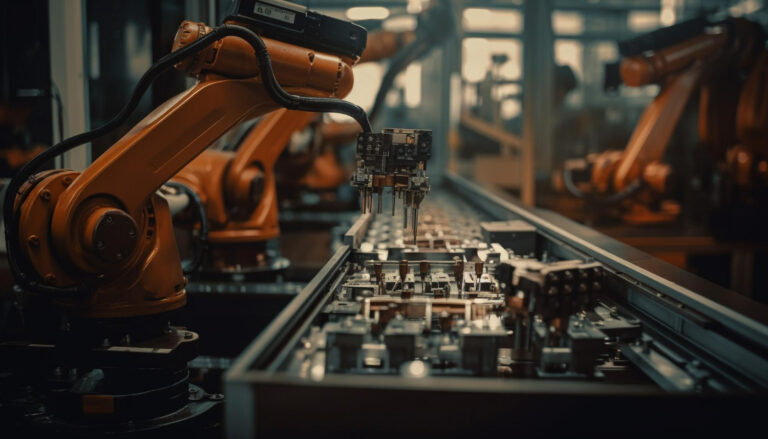
Machines making machines? An AI-generated image depicting industrial robots at work.
While the recent Washington D.C. court ruling regarding AI-generated art is a significant milestone, it’s not the only legal consideration in this domain. In the European Union, the case of “Portrait of Edmond de Belamy” by the Paris-based art collective Obvious raised similar questions. In that particular instance, the famous auction house Christie’s took on the sale of the AI-generated artwork describing it as “not the product of a human mind”, and packaged the sale as “the first piece of AI art to come to auction.” And it worked. The painting was expected to go for roughly $10.000 but ended up yielding a staggering $432.000! Indeed, it was this particular confluence of technology and marketing that helped sell the story to the public.
Global Perspectives: Divergent Approaches
The global stage is witnessing diverse approaches to AI-generated art and copyright. Nations are grappling with how to balance the protection of artistic rights with the promotion of technological advancement. It is very likely that international agreements and conventions may play a pivotal role in shaping the future of copyright law in this arena.
Public Opinion: Shaping the Discourse
Public opinion is a crucial facet of this discussion. Surveys have shown that a significant portion of the public views AI-generated art as a promising evolution of creativity. However, ethical concerns about authorship and attribution persist, especially when AI-generated images closely resemble the style of human artists. Do people see AI as a tool for innovation, a threat to traditional creativity, or something in between?
Economic Implications: The Creative Industry's Pulse
Beyond the legal and philosophical debates, the economic repercussions are profound. For example, some tech companies invest heavily in AI-driven content creation tools that could revolutionize photography. This investment is contingent on the legal framework surrounding copyright. The presence or absence of copyright protection can influence incentives for investment in AI technologies, further shaping the future of innovation.
Technological Developments: The Constant Evolution
The landscape of AI and photography is dynamic, with new algorithms and tools continually emerging. Recent developments in AI image generation have allowed photographers to automatically generate diverse and highly realistic images for various purposes, from stock photography to marketing materials. The popular stock image website, Freepik, is already offering its users the ability to search for “AI images”, with more and more content getting uploaded every day. These innovations hold the potential to disrupt existing copyright paradigms, as they expand the capabilities of AI to create and augment visual content.
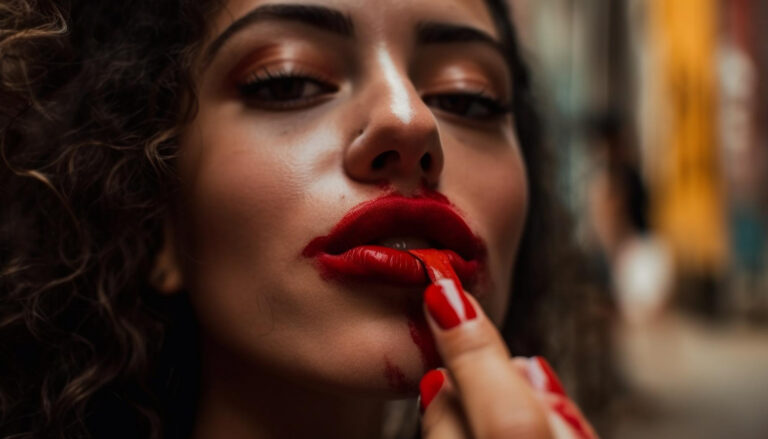
The above image was taken from Freepik, a stock image website that now offers AI-generated content to its users.
Ethical Considerations: The Heart of the Debate
At the heart of this debate are ethical dilemmas surrounding AI-generated art and copyright. For instance, using AI to generate portraits of individuals who never existed poses ethical questions about consent and privacy. Additionally, questions arise about whether AI should be programmed to avoid generating content that perpetuates stereotypes or biases. Questions about authorship, attribution, and cultural appropriation in the context of AI-generated works raise complex moral quandaries that need to be addressed.
Potential Solutions: Navigating the Future
In the face of these challenges, potential solutions or policy recommendations become crucial. One approach is to establish clear guidelines for attribution when AI is involved in the creative process. Additionally, setting a distinct category for AI-generated art within copyright law could provide a path forward, similar to how databases and compilations are treated separately. How can society strike a balance between fostering AI-driven creativity and protecting the rights of artists and creators? It is clear, that crafting a cohesive strategy for this new era of creativity is paramount.
Case Studies: Real-World Implications
To bring these concepts to life, real-world examples of artists, photographers, and companies navigating the copyright landscape with AI-generated works offer invaluable insights. For instance, the collaboration between photographer Mario Klingemann and the British band Massive Attack led to the creation of AI-generated music videos and artwork. These projects illustrate the potential for fruitful collaborations between humans and AI in the creative process. These case studies illuminate the practical implications of different approaches, shedding light on the ever-evolving relationship between AI and copyright.
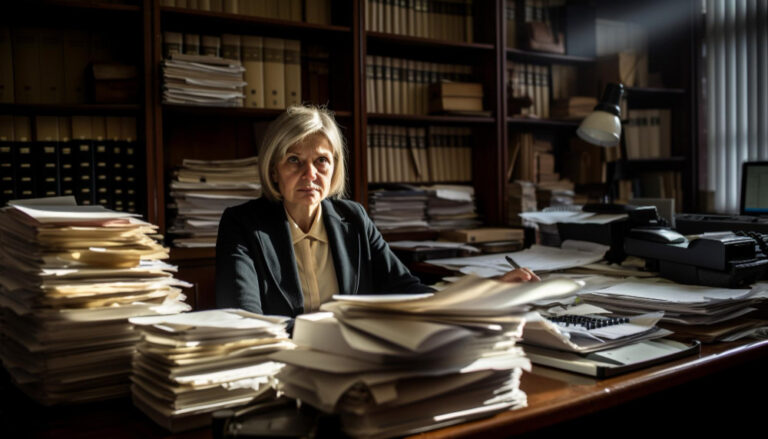
A busy professional sitting at her desk surrounded by paperwork. This person does not exist.
The future of photography and AI-created art currently hangs in the balance. The path forward requires a judicious equilibrium between fostering innovation and preserving creative rights. As AI continues to redefine the creative landscape, finding common ground among divergent perspectives remains a pressing challenge. Balancing innovation and protection is the imperative of our time, and its resolution will undoubtedly shape the future of creative expression in the digital age.
